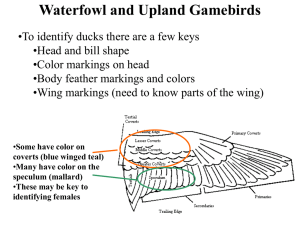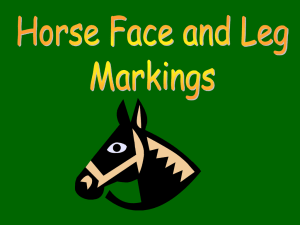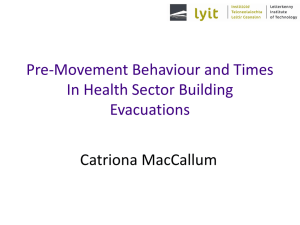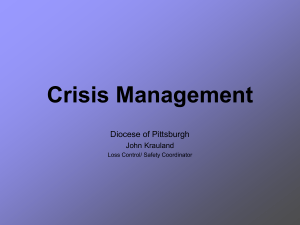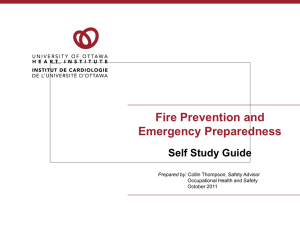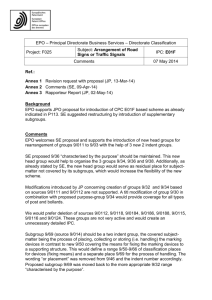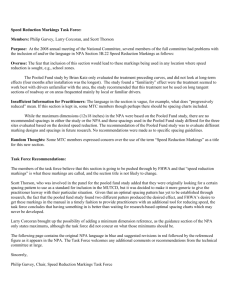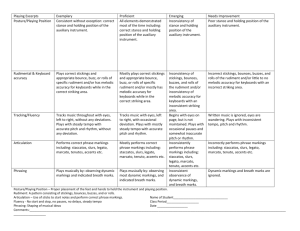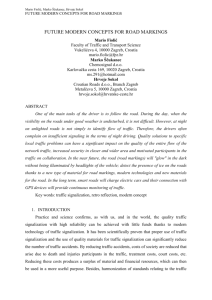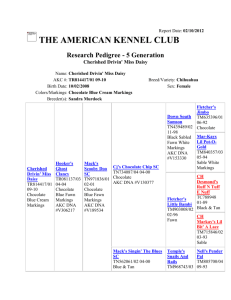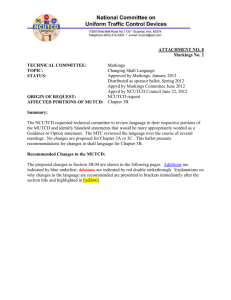Urban Search and Rescue for First Responders
advertisement
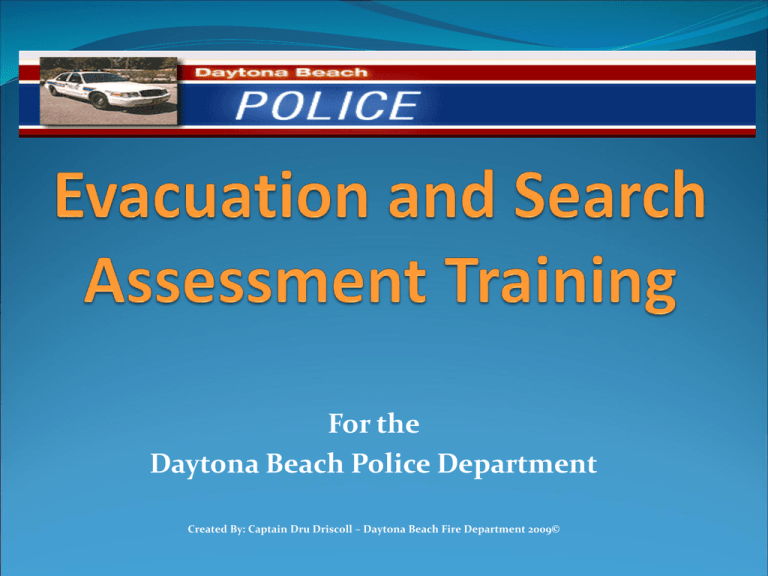
For the Daytona Beach Police Department Created By: Captain Dru Driscoll – Daytona Beach Fire Department 2009© Objectives Types of Evacuation Coordinated Evacuation Efforts. DBPD Search Assessments DBFD Search Markings and When They Will be Used Types of Evacuation Three types of evacuations defined by the type of evacuation order: mandatory, recommended, and voluntary Voluntary: Media Notified. No traffic control established. For persons in high risk areas. Recommended: Media notified. Street to street announcements not needed. Reverse 911 may be used. Re-entry to area not recommended. Mandatory: Media notified, Reverse 911 shall be used, Door-to-door or street-to-street announcements needed. Deny re-entry to evacuated area. Coordination of Evacuation Evacuations are a multi-agency coordinated process. Evacuations shall be coordinated through Incident Command. Geographic grids will be established for door-to-door and street-to-street evacuation efforts. Communicate your completed evacuations (street or grid) to immediate supervisor. Wait for reassignment. Evacuations for Pre-Event and Post-Event may differ in your assigned priorities. Termination of the evacuation order will be issued and communicated by the Incident Commander. DBPD Search Assessments Post-Event, systematic street-to-street and door-to- door searches and evacuations may be required. Geographic grids will be established for door-to-door and street-to-street search /evacuation efforts. “Windshield Assessments” should be performed immediately after an event. Windshield Assessment: Driving street-to-street within assigned area reporting issues (building collapse, fire, safety issues) to supervisor. Interior structure searches should not be performed. Communicate location to be searched to supervisor. Fire Department Searches Through DBPD windshield assessments, Fire Department personnel will be dispatched to perform search and rescue within structures of light, moderate, or heavy structural damage. CERT teams may perform interior searches of light to moderately damaged structures. “Search Markings” and “Structure / Hazard Markings” shall only be performed by Fire Department personnel in structures that are determined uninhabitable. DBPD officers may be deployed as a Task Force with DBFD and Public Works during search operations. Light Damage Moderate Damage Heavy Damage Search Markings Search Markings and Hazard Markings shall be performed by Fire Department personnel. Markings shall be placed with orange paint or green decals placed at front entrance to structure. To prevent unnecessary expense to residents, Search Markings will only be placed on uninhabitable buildings as determined by DBFD. Search Markings provide the following information: Search started or complete Hazards Number of victims and/or dead Who performed search and when performed Search Markings Time Search Team Hazards Number of Victims Structure / Hazard Marking Structure Safe for Search Structure / Hazard Marking Building Significantly Damaged Search may be Limited Structure / Hazard Marking Do Not Enter Search Not Safe Structure / Hazard Marking Hazardous Materials In Area Haz-Mat Specialist Needed HM Summary Evacuations and searches are multi-agency systematically coordinated events. Each agency has a specific role. DBPD – Assessments, citizen safety, and evacuation DBFD – Search & Rescue, Building stabilization, and evacuations. Public Works – Road clearing, Large debris removal Searches of structures and Search markings are to be performed by DBFD. Search and Hazard information available at: http://www.ksimt.org/USARMarkingSystem.pdf
